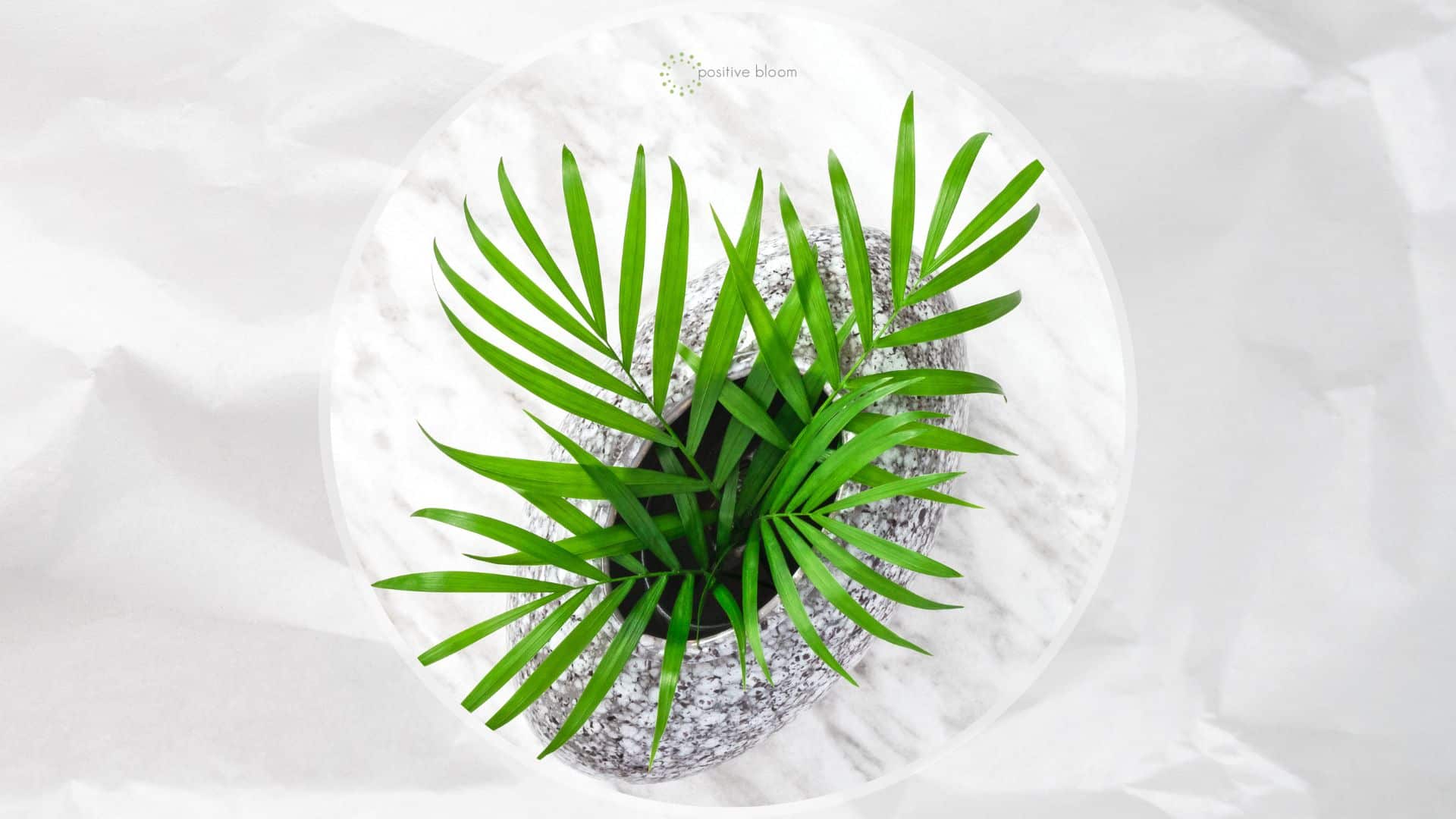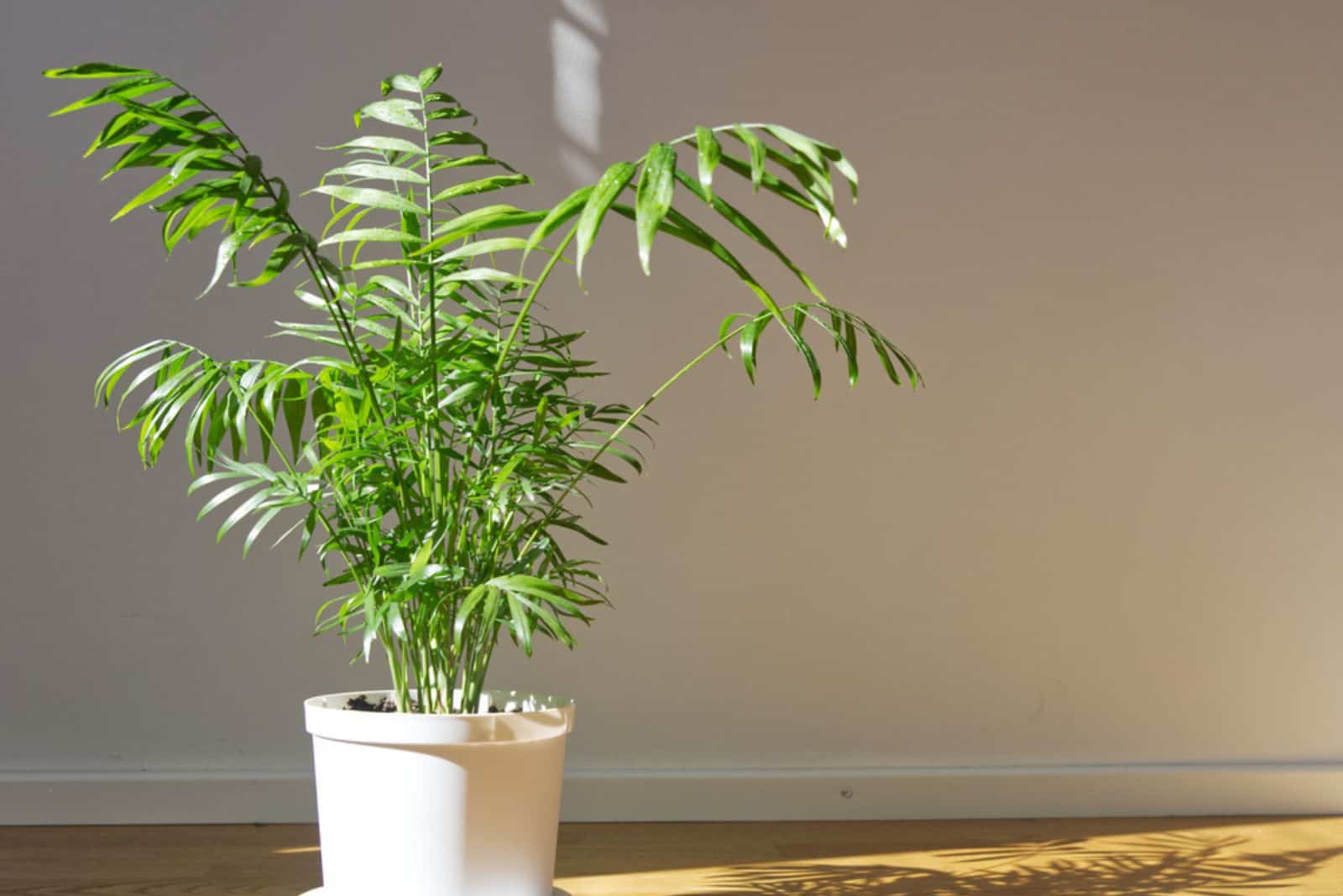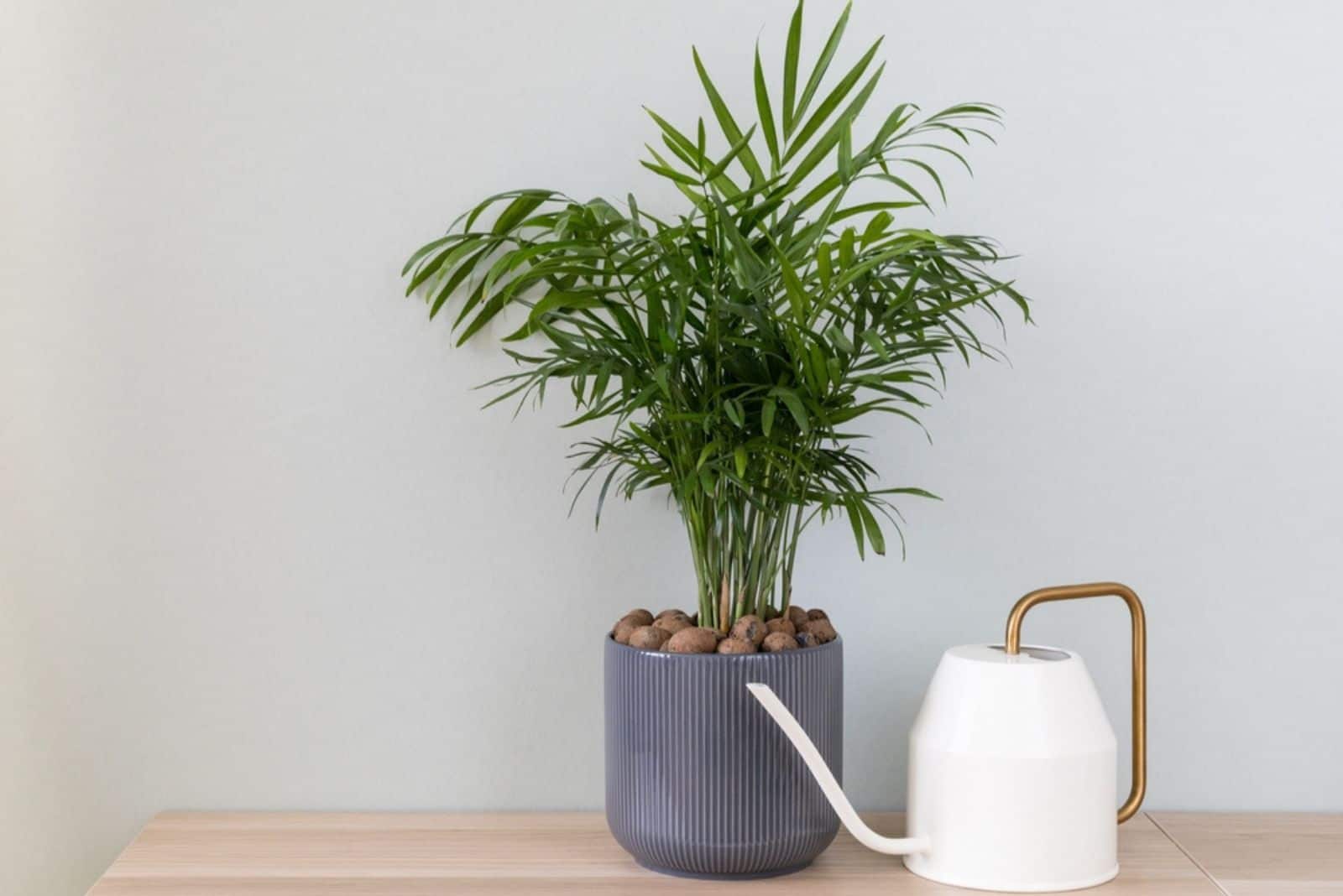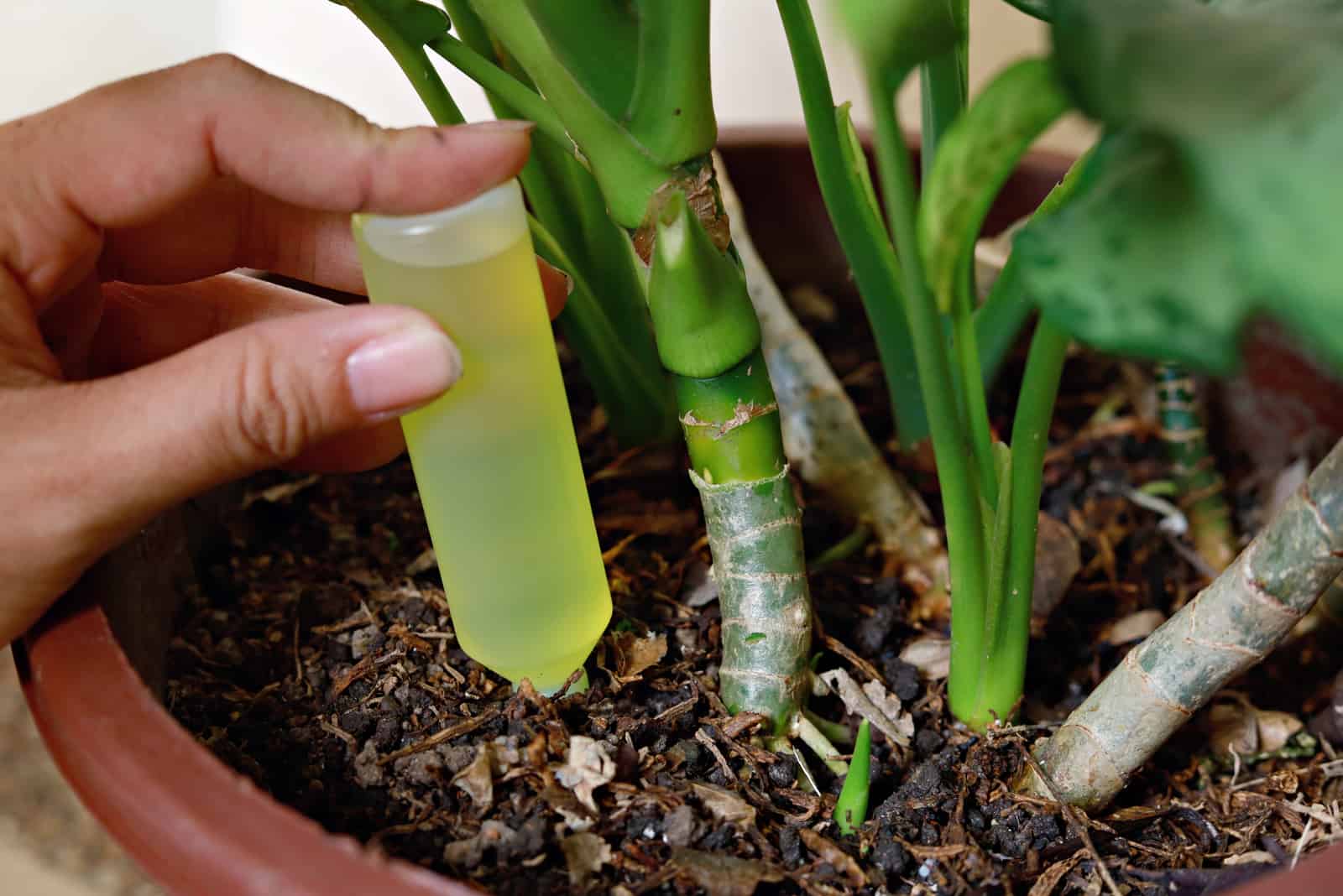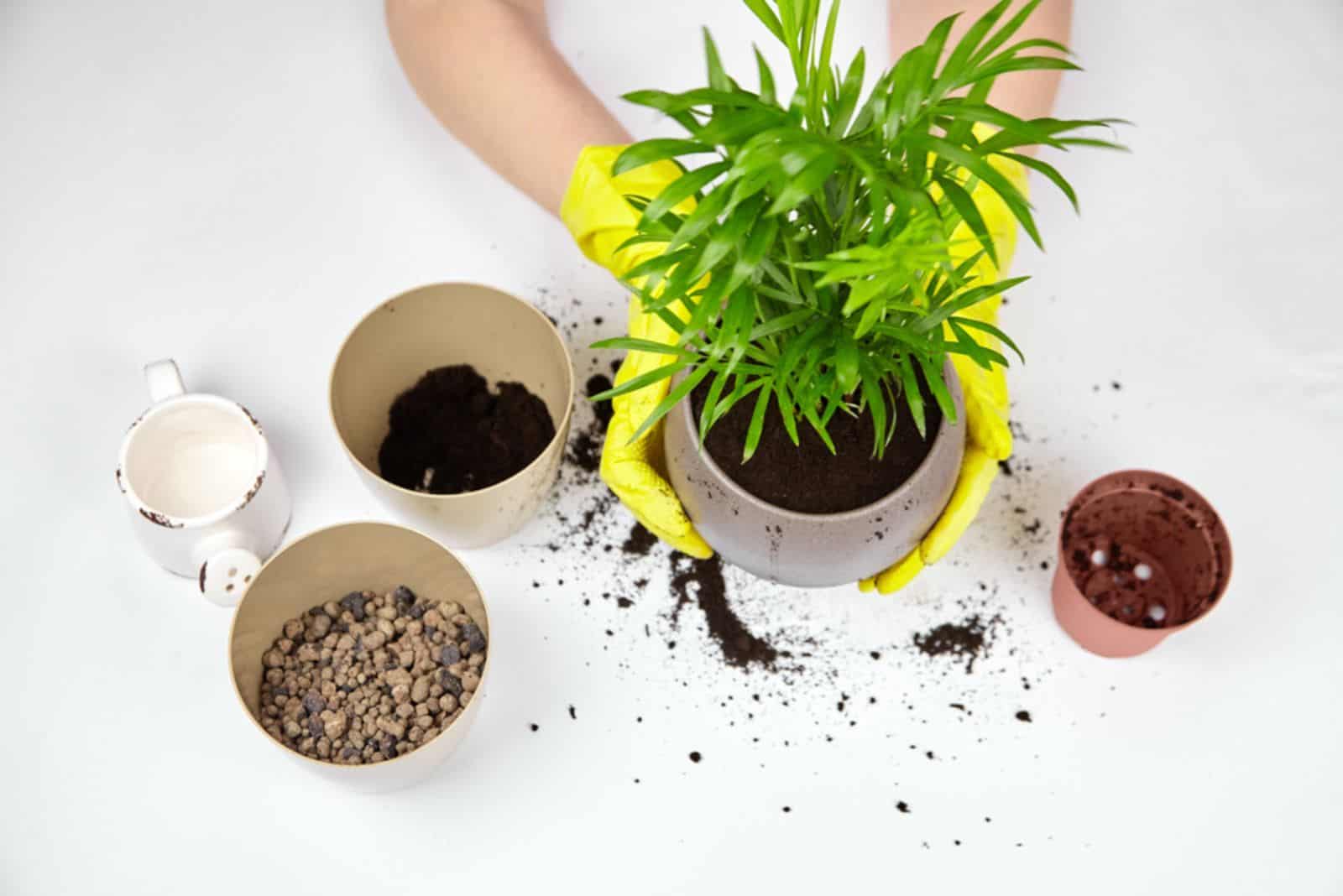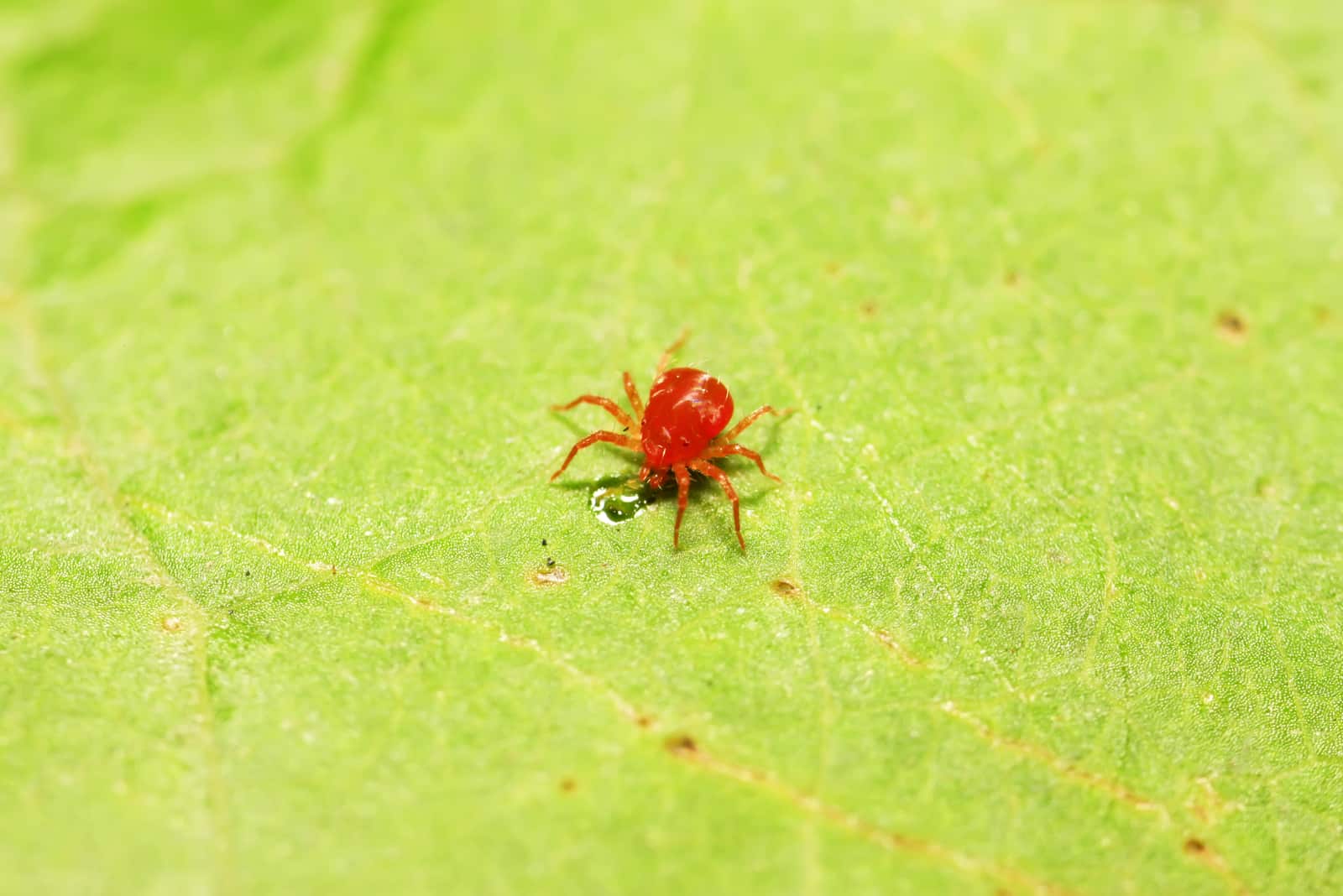Indoor palm trees bring so much to decor, and the parlor palm is one of the top options due to its stunning looks and low-maintenance requirements.
However, if we don’t care for it properly, it may experience various issues such as droopiness, stunted growth, or even leaf discoloration.
Therefore, to make sure you don’t have to deal with terrible parlor palm brown tips, I decided to devise a simple routine that will help keep your plant beautiful.
Some of the most common causes of this unsightly issue are too much direct sunlight, over or underwatering, using tap water, overfertilization or magnesium deficiency, low humidity, extreme temperatures, transplant stress, and extreme temperatures.
As you can see, there are a number of things that can do harm to your parlor palm, but we’ll explore all the things you need to know about preventing this issue in the following article.
As for now, let’s look at the basic info of parlor palms:
Preventing Parlor Palm Brown Tips
As we mentioned, some of the causes of brown tips on parlor palm fronds are directly related to not meeting its requirements.
They’re also the common reasons for a palm tree dying, which is why you should immediately establish what’s causing the browning and deal with it adequately.
But if you don’t want to bother with such things, you can simply follow the tips from below and keep your plant healthy at all times.
1. Adjust The Lighting
One of the most common causes of brown leaf tips is direct sunlight, which is why you shouldn’t expose this palm tree to it. You can if you must, but keep that exposure to a minimum.
Position your parlor palm where there’s bright indirect light or near a window with eastern exposure.
This location will ensure that your palm gets enough sunlight (albeit direct) for optimal photosynthesis without risking sunburns. The UV intensity is weaker in the morning and just like it’s safe for us, it’s safe for our plants.
And if you don’t have a room in your home that can provide these conditions, you can always use artificial lights to help your plant grow.
However, even fluorescent lights can cause yellowing of the foliage and leaf necrosis if they’re on for too long. (1)
Furthermore, incandescent lights can burn the foliage and leaf tips because they emit a lot of heat, so it’s always better to place them at least a foot away from your palm.
Always remember to turn down the lights at night and keep your plant at a suitable distance from them, and you won’t have to deal with brown leaf tips.
If you want to keep your parlor palm outside during the warm season, place it somewhere it’ll get direct sunlight only in the early morning or late afternoon, and shade during the hot parts of the day.
2. Use The Proper Amount Of Water
When I was a beginner, I used to water my plants constantly, and God only knows what would have happened to my parlor palm if I didn’t stop!
These plants love moisture around their roots, but if the soil is always wet, it can quickly lead to rotting. Some common signs of an overwatered palm tree include yellow leaves and brown tips, droopiness, and even pest infestations.
On the other hand, underwatering can also lead to brown frond tips, which is why you should avoid letting the potting mix dry out completely in between waterings.
Instead, the best watering technique for these plants is to wait until a couple of inches of the growing medium are dry before irrigating it.
I always water until I notice the excess has started to drain out through the potholes.
If it’s the middle of the summer and the weather is scorching, I leave the excess water in the tray, but if it’s mid-winter, I empty the saucer since the plant doesn’t need that much moisture anyway.
3. Apply Suitable Water
Something that I didn’t pay much attention to in the beginning was using the adequate water type for plants. I always thought that if tap water is good enough for me to drink, then it’s good enough for plants too.
I was wrong!
Tap water contains chlorine and fluoride, which can build up in the plant and prevent normal absorption of moisture and nutrients.
Elevated fluoride in the leaves can cause necrosis of the tissue, which is associated with tipburn (browning of the frond tips). (2)
Luckily, you can easily avoid these issues by using proper water. For instance, I saw much improvement in my plant’s health after switching to distilled water for a while.
But since I have a lot of plants and it simply isn’t sustainable for me to constantly buy this type of liquid, I started to collect rainwater because it doesn’t contain chlorine and fluoride.
You can also use tap water, but you’ll have to leave it in the air for at least 24 hours so the chlorine can evaporate. Furthermore, fluoride cannot evaporate this way, and you’ll have to get a water filter to remove it.
4. Consider The Humidity Levels
The parlor palm is native to tropical rainforests, and as such, it requires a fair deal of humidity to thrive.
It can tolerate lower air moisture levels, but if it’s really low (and the temperatures are high), you’ll notice browning of the leaf tips.
One way to avoid this is to keep your parlor palm away from locations with low humidity levels, such as drafty windows, doors, air conditioners, and heaters.
Constant air movement makes these areas drier than others, which is why they’re not suitable for your plant.
Another way to prevent browning of the tips is to raise the indoor humidity. The best way to do that is to get a humidifier or mist your plant’s foliage from time to time.
Furthermore, pebble trays don’t work for humidity if you live in an arid region as they can only increase the air moisture levels by up to 7% in the summer at a height of 1.5 inches.
And since parlor palms are about 4 feet tall, this isn’t enough (not to mention that the increase of 7% is actually quite small since the average household air moisture is 30-40%, and this plant requires at least 40%, although 50% and above is ideal).
5. Don’t Use Too Much Fertilizer
Parlor palms don’t generally require too many additional nutrients, so it’s very easy to overfertilize them.
High concentrations of this substance in the soil can damage and burn the roots, which hinders the proper absorption of nutrients and moisture, and results in brown leaf tips.
Therefore, it is crucial to know how and when to feed your parlor palm in order to avoid this issue.
When it comes to this plant, I use a well-balanced houseplant fertilizer diluted to at least half-strength (or more if it’s rather strong), and apply it once a month during the plant’s growing season.
The key thing is not to feed your plant during winter since it doesn’t grow that much in that period and doesn’t need additional minerals.
Overfertilization sometimes has nothing to do with the strength and amount of fertilizer we use, but with salt buildup in the soil.
Therefore, you should repot your palm into fresh soil every couple of years or flush the soil with water. Many growers advise using four times more water than the pot’s volume, but I irrigate my plants slowly for 20 minutes and it works splendidly.
6. Use Proper Fertilizer
Sometimes the type of fertilizer you use for your parlor palm can also lead to necrotic spots and browning of the leaf tips.
For instance, lack of phosphorus and potassium can cause browning of leaf tips and margins. (3)
I live in Florida and have only recently found out that potassium deficiency is common in our palm trees due to the soil type and heavy rains (or watering). This issue is only exacerbated by high-nitrogen fertilizers. (4)
Therefore, it’s a good idea to test your soil if you want to grow this plant outside, and use a fertilizer that adds nutrients that are lacking in the soil.
7. Be Careful When Repotting
The parlor palm isn’t an avid grower, so you won’t have to repot it very often. However, you should do it every 2-3 years at least to refresh its growing substrate even if you don’t change the pot.
This period of moving and disturbing its root system can be very stressful, and your plant can have a hard time recovering.
Some parlor palms can even exhibit brown tips, especially if their roots get damaged in the process.
Therefore, you should be extra careful when moving it and disturb its root system as little as possible. Try not to use any sharp objects, and don’t pull them too hard.
Another thing that can help your plant get over transplant stress is moving it on an overcast day and exposing it to indirect sunlight after repotting since too much sun can dry out the potting soil quickly and lead to more stress.
Furthermore, choosing the right potting soil for palm trees is extremely important because inadequate drainage and aeration can lead to overwatering and root rot.
Speaking of drainage, terracotta containers with a hole in the bottom are perfect for this tree since they don’t retain moisture for too long.
Pro tip: Disentangle the parlor palm’s root system only if the plant is extremely rootbound. If the roots are free or just loosely tangled, leave them be since disturbing them will cause more stress than separating would benefit them.
8. Don’t Expose Your Parlor Palm To Extreme Temperatures
Parlor palms thrive in temperatures between 65-75°F, although it can tolerate warmer conditions (up to 85°F).
However, extremely high temperatures can lead to tipburn and browning, while extreme cold can result in frost damage and even death if you expose it to temperatures lower than 30°F.
What’s more, this plant can tolerate conditions of about 50°F, but its growth rate will slow drastically.
Either cold or very hot temperatures can cause leaf discolorations, such as yellowing of the entire leaf or browning of the tips.
Therefore, keep your palm trees warm all year long, and if you grow it outside, move it indoors when the nighttime temperatures reach 50°F.
And if you’ve planted it in the ground, you can mulch it to keep its roots warm and cover it with a freeze cloth.
9. Deal With Pests At Once
Pests usually attack plants that are weakened by inadequate watering, which means that you can easily avoid this issue by caring for your parlor palm properly.
However, if some aphids, spider mites, mealybugs, or other insects find their way onto your plant, you should deal with the infestation at once.
These bugs suck the sap out of your plant, which will further weaken it and lead to leaf discolorations. (5)
Luckily, you can treat pest infestations easily by using horticultural oils; just bear in mind that neem oil can burn plant leaves if you don’t dilute it properly or use too much of it, and lead to similar browning of the frond tips.
Furthermore, one of the most vicious pests that attack the parlor palm (and the most common spider mites that infest it) are tumid spider mites, and you can successfully treat them with specialized pesticides. (6)
However, be careful which insecticide you use because compounds such as chlordimeform can have adverse effects on your parlor palm. (6)
What To Do With Brown Parlor Palm Leaf Tips
If your parlor palm has suffered some of the stress that we talked about in the previous sections, and you’re left with unsightly brown tips, you can simply remove them.
And if you hate the look of half-cut leaves, you can completely remove foliage with brown tips.
Many gardeners advise against cutting into the healthy part of the leaf, but it’s important to understand that this plant doesn’t produce new growth from the tips, but from a terminal bud.
Therefore, if your plant has many leaves with brown tips (or brown leaves in general), you can just snip them off and give your plant a new shine.
In this video, you can learn how to tidy up your parlor palm:
Final Thoughts
Parlor palm brown tips can be a result of any number of reasons, from inadequate watering, lighting, temperature, and fertilization, to pest infestations and transplant shock.
However, you can easily prevent your plant from getting brown and scorched-looking tips by implementing proper care.
That means exposing it to indirect light, watering it when the topsoil dries out, keeping it in warm temperatures, and feeding it once a month with appropriate fertilizer.
If you do these things, repotting stress won’t cause so much damage to your plant and you probably won’t have to deal with pests at all.
Good luck, and until next time!
[sp_easyaccordion id=”18884″]

